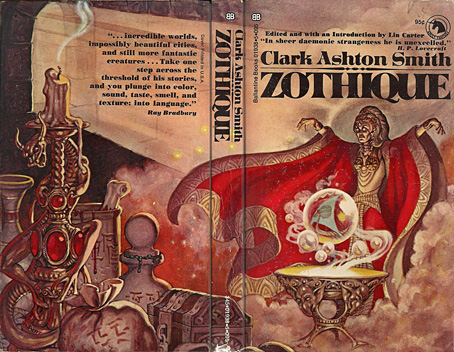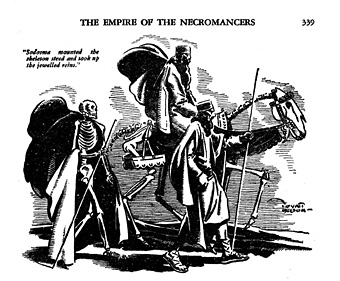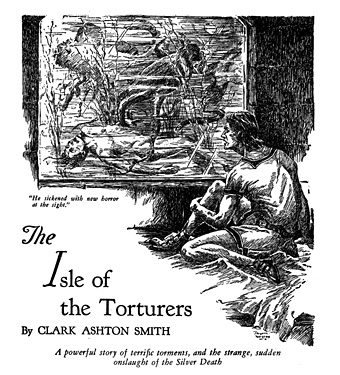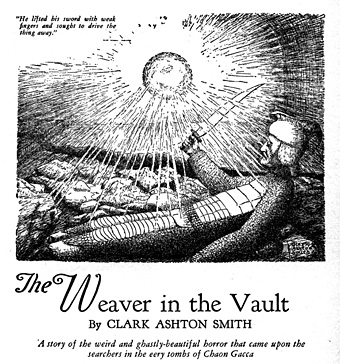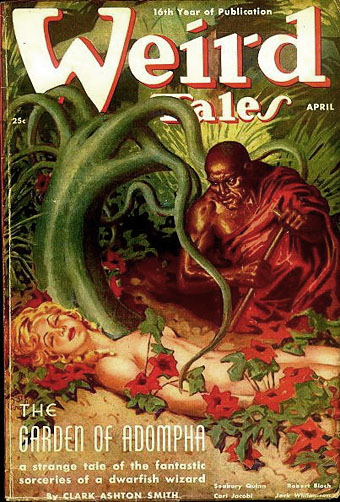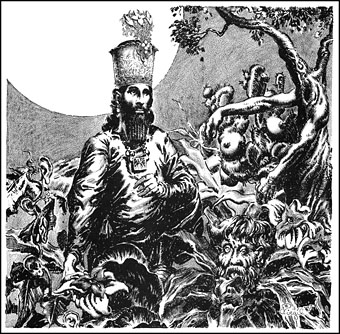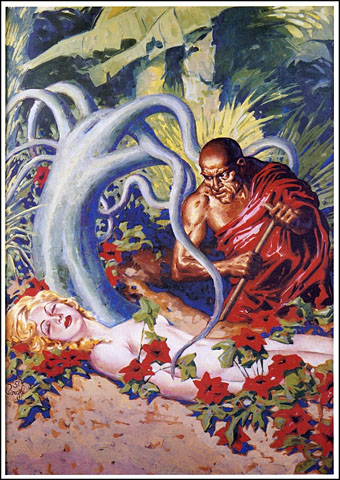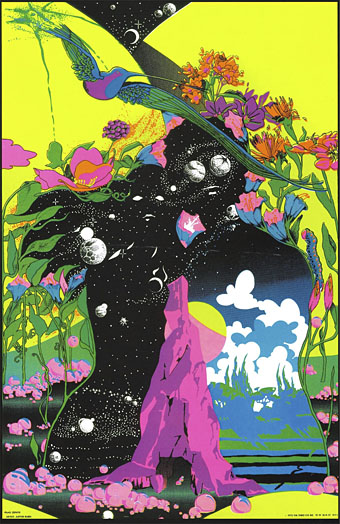
Zephyr (1970), a blacklight poster by Jupiter Rubin. Via.
• I wouldn’t usually expect Clark Ashton Smith’s Zothique to be mentioned at Literary Hub for any reason, but there it is. Emily Temple recommends some of the best stories from a century of Weird Tales that you can read online.
• Mixes of the week: A mix for The Wire by Gamut Inc, and The Last of Us, “a non-stop mix of ambient soundscapes, experimental electronics and modern classical music”.
• “…Yaggy believed that wonder was the helpmate of learning.” Sasha Archibald on Levi Walter Yaggy’s Geographical Maps and Charts (1887/93).
Stylistically, Beardsley’s pictures for Salome are among his most derivative and original. In the sharpness of their lines and great swaths of black and white, we see the well-documented influences of Japanese woodcuts and Ancient Greek vase-painting. And yet, Beardsley’s work bridges these grand traditions of East and West with such fresh dynamism and taboo as to be undeniably, and ultimately definitionally, Nouveau.
Mirror and Window Both: The Brief Superabundance of Aubrey Beardsley by A. Natasha Joukovsky
• New music: Rhinog Fawr by Somatic Responses, and Sargo/Posidonia by Sleep Research Facility/Llyn Y Cwn.
• “Why is there such a voracious consumer appetite for miniature things?” asks Steven Heller.
• At Dennis Cooper’s: Spotlight on…Julio Cortázar Blow Up and other Stories (1967).
• At Unquiet Things: The Prolific Pioneering Pulp Art Of Ed Emshwiller.
• Random images from DJ Food’s desktop.
• Miniature Sun (1989) by XTC | Adventures In A Miniature Landscape (2009) by Belbury Poly | Miniature Magic (2020) by Plone

